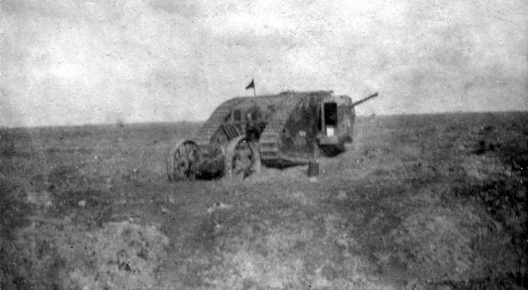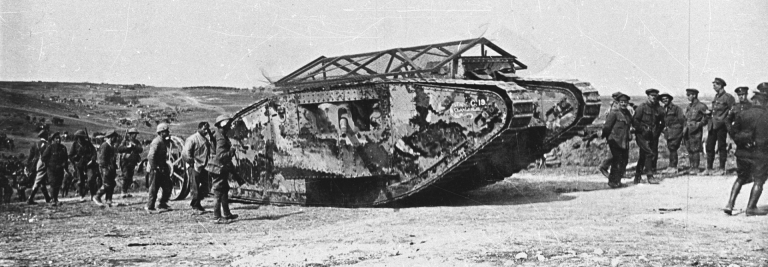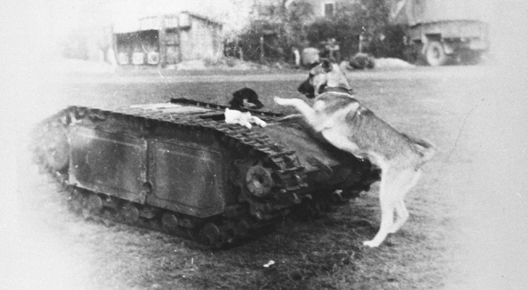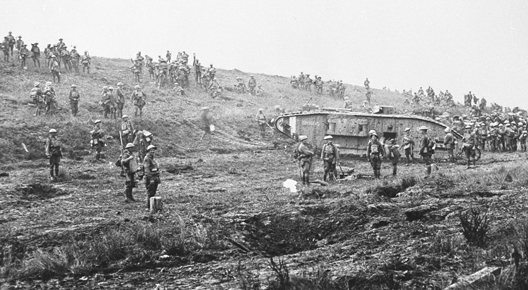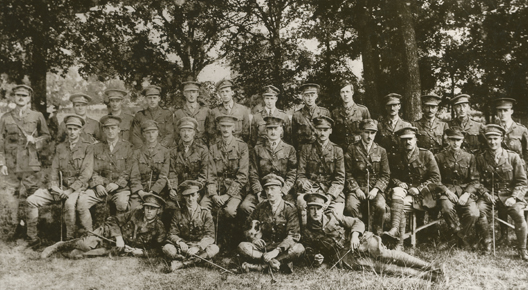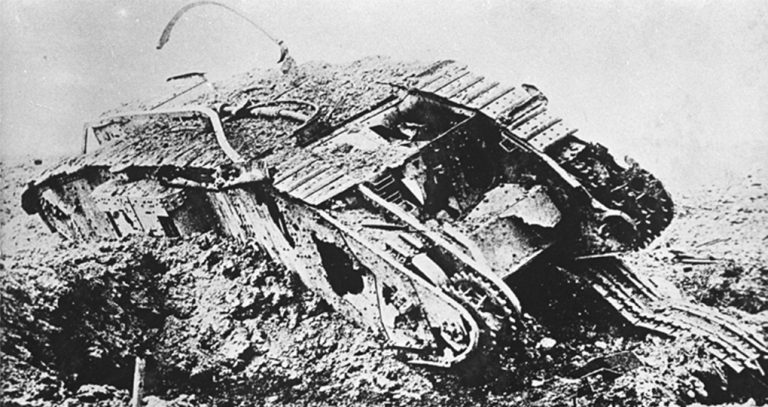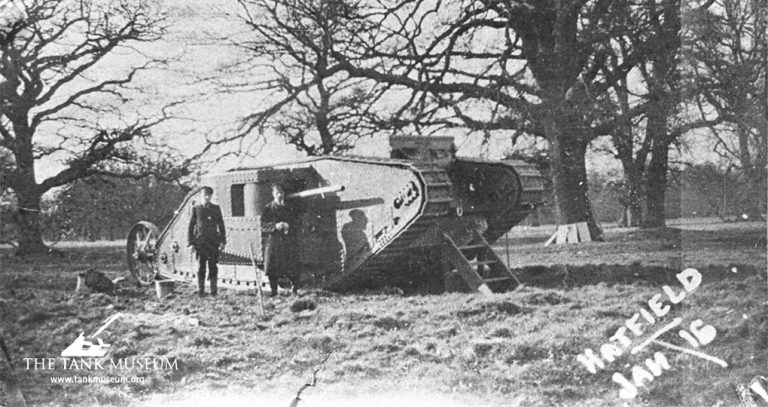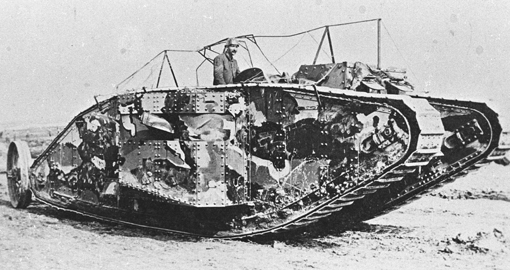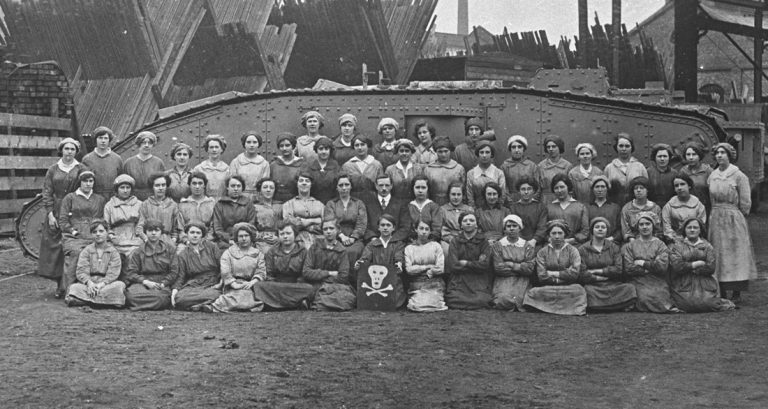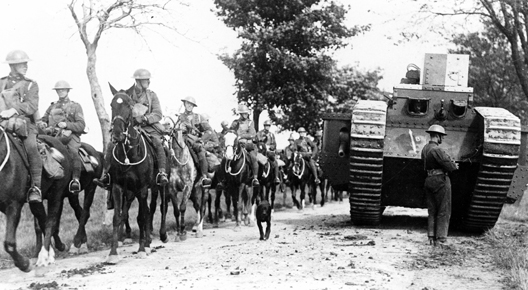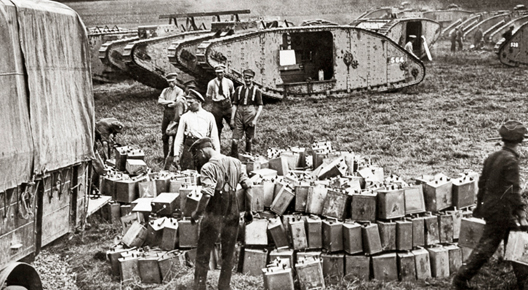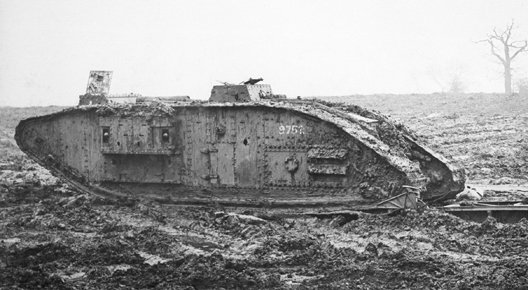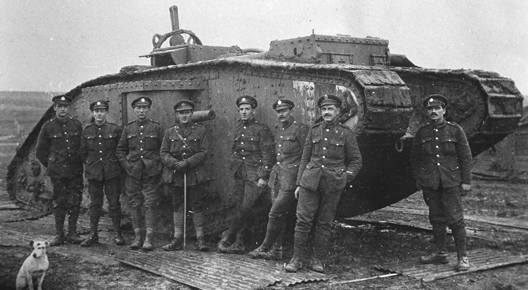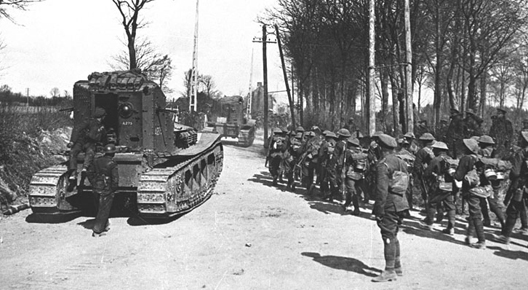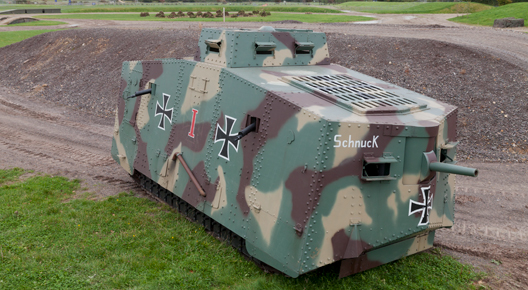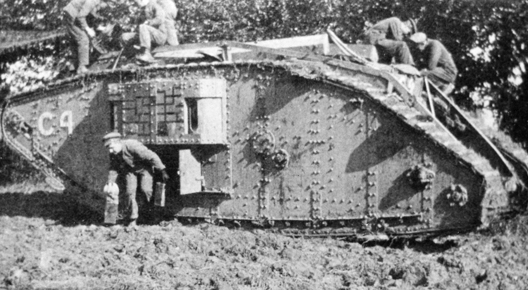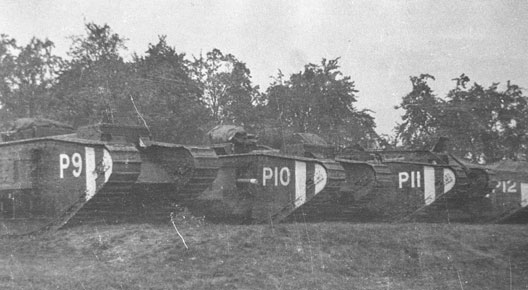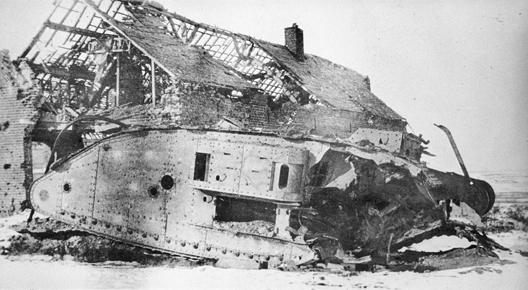Captain Harold Mortimore led his tank Daredevil across no man’s land. This was the first tank in history to see action on a battlefield….
Tanks at Flers
The Battle of the Somme commenced with a vast British attack on 1 July 1916. On that first day of battle, the bloodiest in the history of the British Army, there were over 57,000 British casualties….
Animal Mascots: Man’s Best Friend
Saturday 26 August is National Dog Day. To celebrate Man’s Best Friend, we found the best images of dogs and tanks in the Archive….
Battle of Amiens: 8 – 11 August 1918
The Battle of Amiens took place from 8 – 11 August 1918…
Eric Robinson, Last WWI Tank Casualty
Eric Robinson, 9th Battalion, was the last Tank Corps member to die in WWI….
Trapped: The Story of Fray Bentos
Tank F41, named Fray Bentos, was a male Mark IV, number 2329. In August 1917 the nine man crew experienced the longest tank action of the First World War….
The First Tank Trials at Hatfield
Before the tank made its debut in France, the Mark I had to undergo trials and approval stages in Britain. These took place at Hatfield Park. …
Camouflage & Paint in WWI
Tank camouflage is a constantly changing art, depending on landscape, climate and season, among other issues. This article examines the development of tank camouflage during the First World War. …
Building the Mark IV
While historians mainly concentrate on tanks in battle, building armoured vehicles is equally fascinating. Learn how the most produced tank of the First World War was made….
The Battle of Amiens: Part 2 – The Attack
All the planning and preparation for the Battle of Amiens culminated at 4:20am on the 8th August 1918….
The Battle of Amiens: Part 1 – The Plan
The Battle of Amiens began on the 8th August 1918 and lasted until the 11th….
The Mark V*
The Mark V* tank was created for one purpose – its extra length….
Mark V
On the 18th January 1918 the first Mark V tank was driven out of the Metropolitan Carriage, Wagon and Finance Company factory in Birmingham. Just 10 weeks later in early April 8th Battalion Tank Corps began training with the new tank at Humieres. It was a significant step forward from their old Mark IVs….
The Renault FT – Development and Combat Debut
On the 31st May 1918 the Renault FT was used in action for the first time at Ploissy-Chazelle, southwest of Soissons….
Action Debut of the Whippet Tank
On 26 March, 1918, the Medium A Whippet tank saw its first battle action, when it took a mass of German infantry by surprise….
Action Debut of The A7V
The first action of the German A7V tank, on 21 March 1918, is not very well known from the British side. Probably because most of those in action against them were either killed or captured and very little information reached the British authorities at the time. However we now have a German account to work…
Savage Rabbits
In early 1918 the Allies awaited a German attack. Defeating it would be a practical military challenge for the entire British Army, but it also posed a more existential problem for the Tank Corps. …
The Situation in 1918
Looking back from 2018, we know that the First World War ended with an Allied victory in November 1918. However back then, as 1917 ended and the New Year dawned, the Allies saw their position as perhaps the worst it had been for a long time. The Germans, on the other hand, had a small…
Tank Numbers
Like all military and civilian vehicles before and since the First World War, British tanks were given unique registration, or serial, numbers. …
The Legacy of Cambrai
After the Battle of Cambrai, what lessons were learned by both the Allied and German troops? How did the affects of a battle which is seen as a draw influence the last year of the First World War? …
